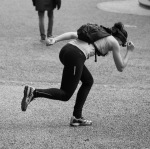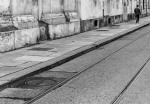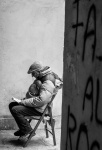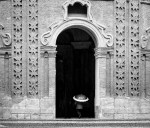Of the three assignments completed so far I found this one the most enjoyable. It is not that the others were not thought provoking or challenging but with this one I found that I really immersed myself in the research, thought process and subject matter. Perhaps subconsciously I was back in a comfort zone or alternatively maybe I have discovered part of my voice in this genre of image creation. Overall I believed I have met the criteria therefore would judge my work at the detailed level as follows:
Demonstration of technical and visual skills – Materials, techniques, observational skills, visual awareness, design and compositional skills. (40%)
- Technical skill: All in focus, all exposed as I wanted then, all level, depth of field as I required with the correct tonal qualities
- Observational skills: As my research shows I did not go for the obvious and built my images up in three learning groups, with each group building on the other.
- Design/Compositional skills: All the pictures are as I wanted them. During shooting I made a conscious decision as to the correct orientation (landscape or portrait) for the image and tried where possible to keep true to Cartier Bresson in that I composed the image full frame in the viewfinder so as there would be little or no cropping afterwards.
Quality of outcome – Content, application of knowledge, presentation of work in a coherent manner, discernment, conceptualisation of thoughts, communication of ideas. (20%)
- I feel I have produced images that show visual qualities that allow the viewer to connect with the theme of the decisive moment and reflect the feel of Cartier Bresson’s images. I also feel that each image works both stand alone and as part of a distinct sequence. There is one image that I highlighted in the text that may be removed from the final submission as it does not represent a human but an animal. I think I need time to reflect more on this but more than likely will remove it.
- From the tutor comments on previous exercises I have given much more thought to the sequence and hanging plan and had tried to express my thoughts more both in the text and visually through annotated diagrams. In a strange way I find this akin to maths in that while you can easily get to the answer that is only part of the solution, the workings out are what really counts in this case the thought process. I feel that I am understanding a little more with each exercise completed.
Demonstration of creativity – Imagination, experimentation, invention. (20%)
- I believe that the images presented the reflect the question in that I have thought hard about what I wanted to represent, and in doing so created both an interest and a curiosity with the viewer regarding the subject. Also I tried not to fall into the too obvious cliché trap. However some of these clichés were perhaps in group 1 of my images but still acceptable as pictures.
- What is interesting is now that the work has been completed, I am still seeing all around me images that would fit in with this assignment. Therefore the learning from this is that this assignment has left a legacy in my ability to see an image. Perhaps the danger is that all future images will have a subconscious decisive moment feel about them. I have to be careful with this so it does not restrict any future creativity in other assignments.
- What I have learnt with this assignment (which is perhaps an extension of my work with crowds in Assignment 2) is that most of the time people are actually extremely predictable. In my group 3 shots where I framed first in anticipation of the subject entering and exiting the frame at the right time and position, very rarely failed. Once the subject was in the frame the secret was just for me to know when to press the shutter. Very rarely did this not work out. I think this predictability in people will be an important learning point for the future.
Context – Reflection, research, critical thinking. (20%)
- For this assignment much research was done. For me the secret here was not to read about Cartier Bresson’s technique more just to study the images and ask myself what worked and why I liked it and conversely what did not and why I did not like the image. Besides Cartier Bresson’s work there are many other modern images on the internet that were viewed. Some of them were conscious exercises in copying his style other more accidental in nature but all good reference points.
Based on the experience and assessment from previous assignments I would consider this a pass but how much I have no idea but as always there is certainly room to improve especially so in the selection and sequencing. I know from the tutor review positive suggestions will be made for improvement and as always appreciate the constructive criticism.

































































